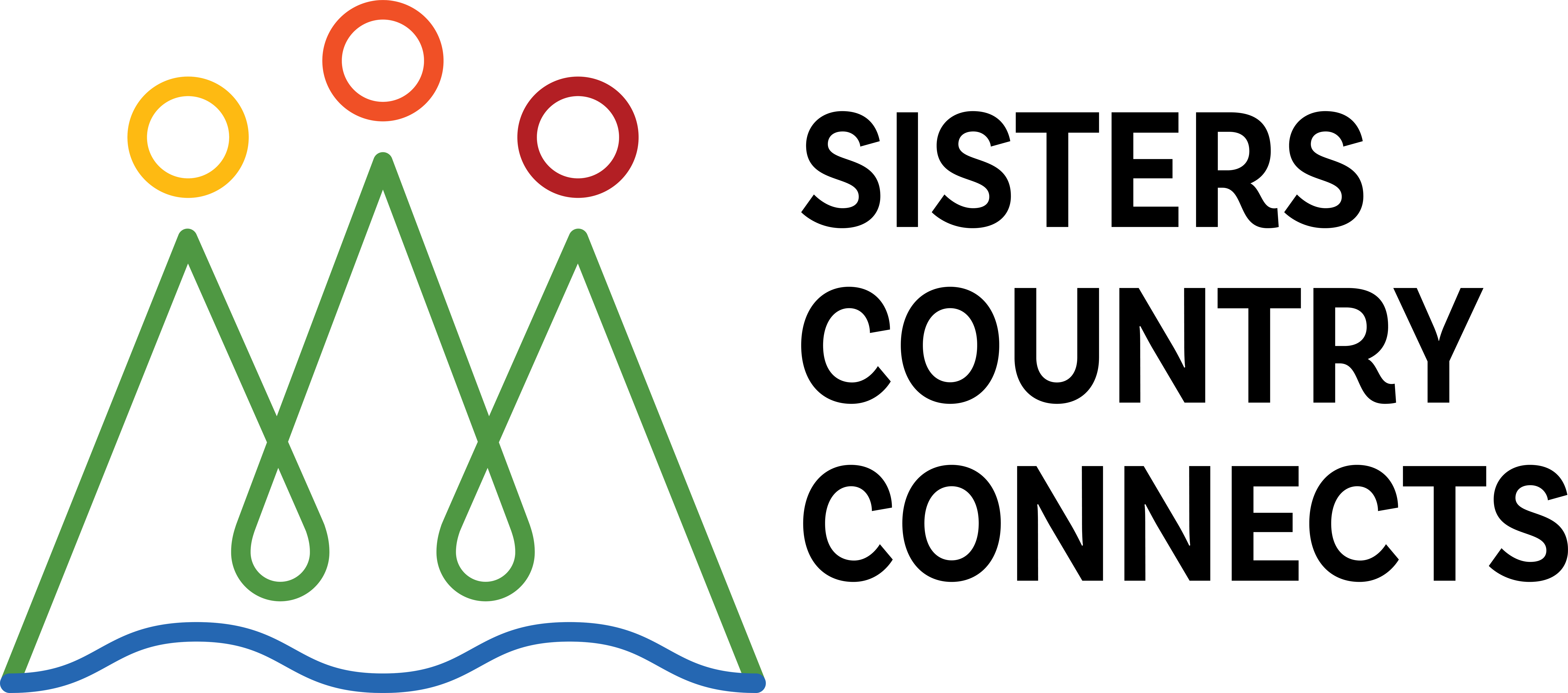
Sisters Country Vision
Our Community | Our Future
Vision History
WHERE ARE WE GOING – AND WHERE DO WE WANT TO BE? When it comes to Sisters Country, these aren’t necessarily the same thing – and figuring out the difference may determine what our community looks like in 10, 15 or 20 years time. That’s the reason for the Sisters Country Vision, a project sponsored by the City of Sisters in partnership with Deschutes County and the Central Oregon Intergovernmental Council (COIC). Currently the Vision Implementation Team (VIT) is facilitated by Citizens4Community (C4C).
Starting in 2018, Sisters Country Vision engaged thousands of community members in a lively conversation about the future of this place we call home. We conducted more than 80 interviews, hosted 13 community meetings across Sisters Country, fielded two online community surveys, held four community forums on topics of vital importance to our future, and created a Vision Action Plan.
At the heart of the Vision Action Plan are 20 core strategies, which fall under 4 focus areas: Prosperous, Resilient, Livable, and Connected Sisters.
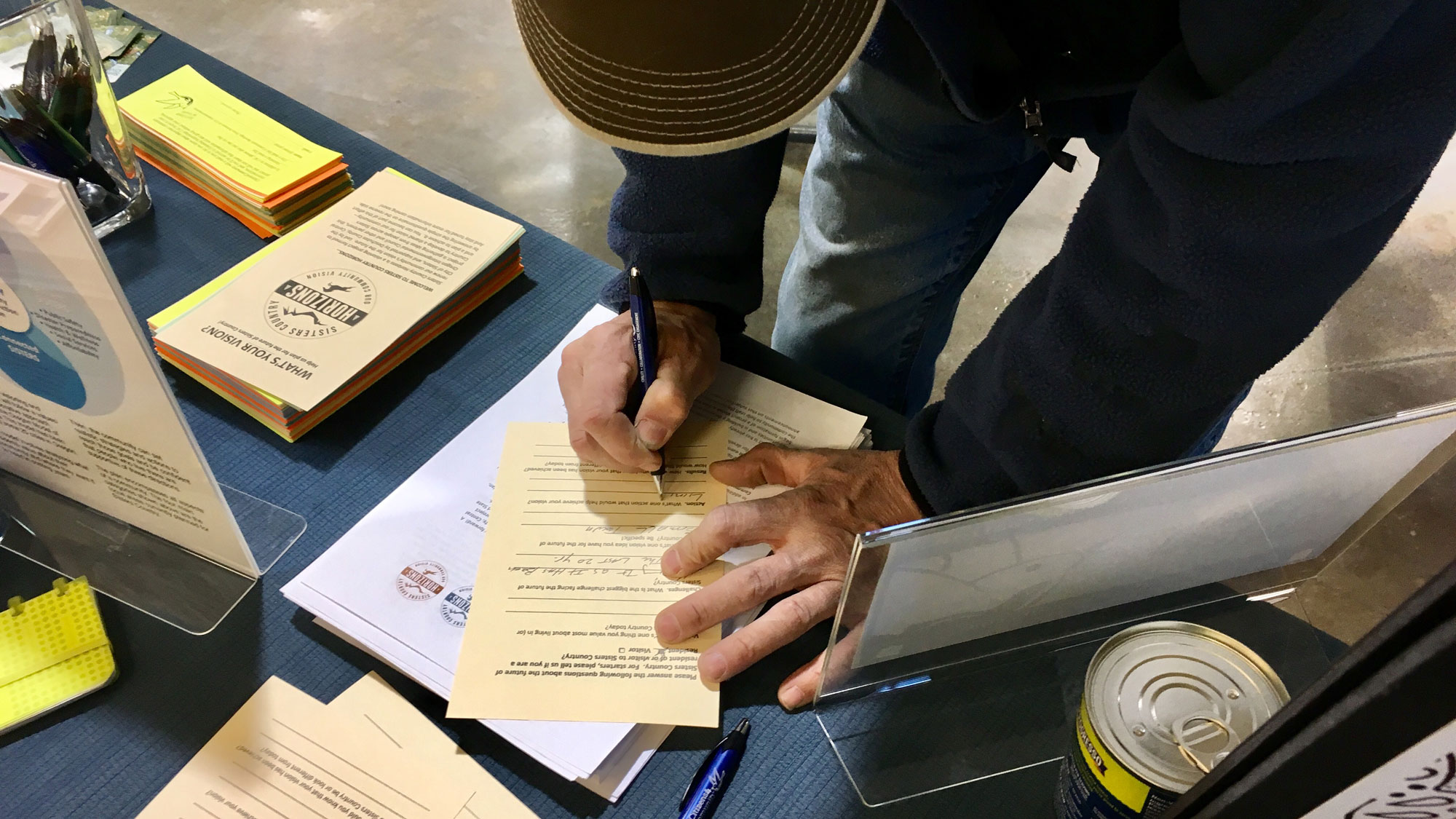
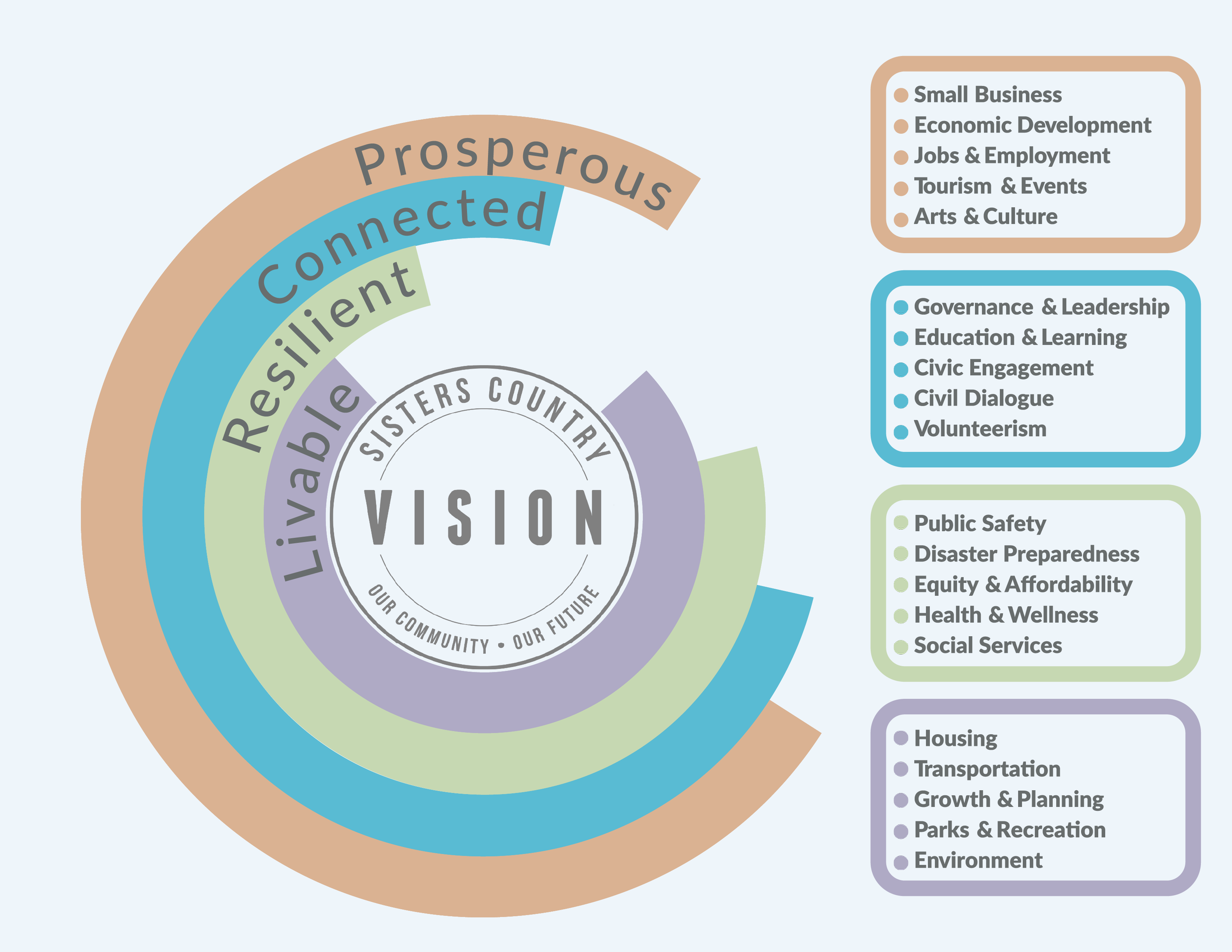
Throughout 2018, the visioning process was led by a project consultant, NXT Consulting Group. NXT has decades of experience designing and guiding community vision processes throughout Oregon and in communities across the globe. NXT’s work was guided by a local Project Management Team.
In 2019, the Sisters Vision Implementation Team (VIT) was formed, to serve as a collaborative table for making and tracking progress on the Vision Action Plan. VIT members meet regularly to share updates on progress, identify and overcome obstacles, identify and secure funding for project implementation, and coordinate and collaborate on community outreach. Every year, the VIT publishes an Annual Vision Progress Update.
Although the VIT provides guidance and helps track progress, the Sisters Country Vision is community-led, meaning that no single leader or entity is solely responsible for making progress on the strategies in the Vision Action Plan. Instead, there is community-wide collaboration between multiple partners, including local government, local agencies and special districts, non-profit organizations, businesses, and individual community members.
The Vision can be a very useful tool for both organizations and community members:
- For organizations, the Vision is an important tool in work plan priority-setting and provides valuable data for grant applications, clearly demonstrating community support for your work.
- For community members, the Vision is a tool for focusing and directing momentum to be responsive to community needs and allocating resources to help meet those needs effectively, together.
The infographic at right highlights the Nine Guiding Principles of the Sisters Country Vision.
Credit: Elizabeth Kirby
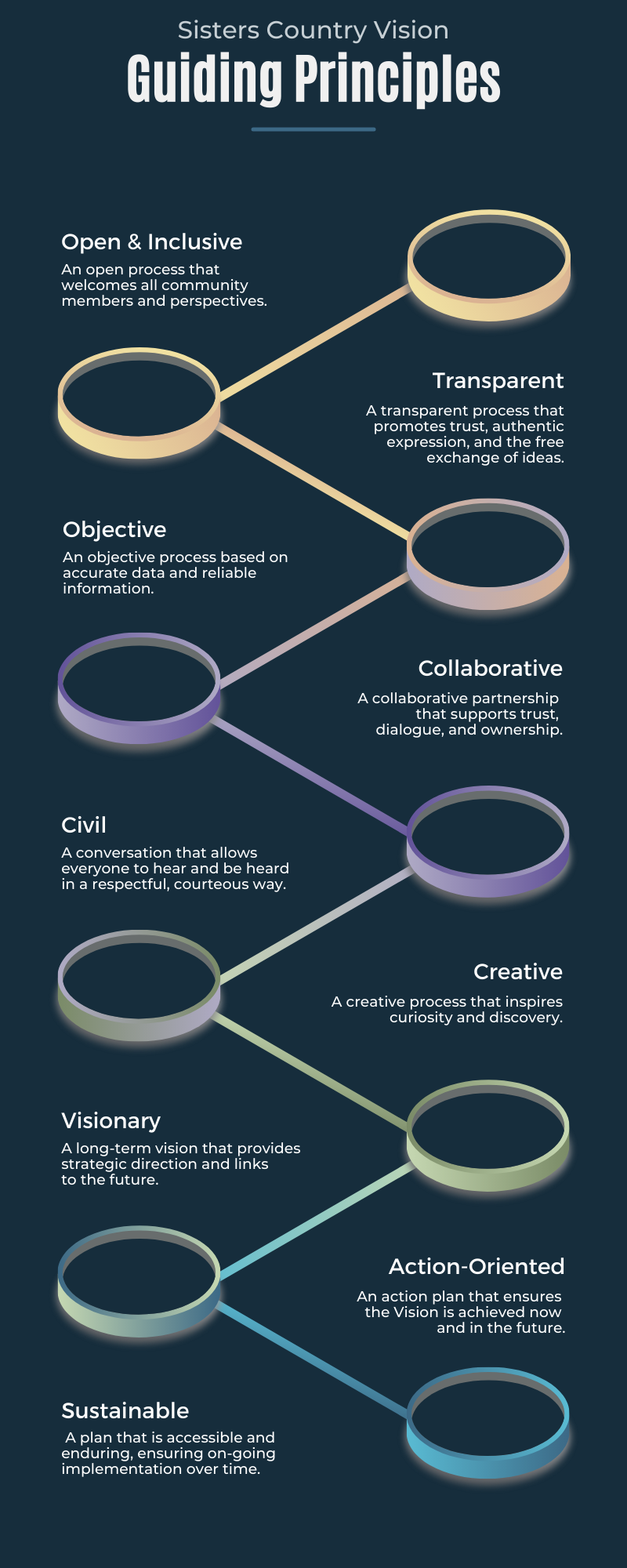
Vision Progress
Completed Vision Projects
Active Vision Projects
Inactive Vision Projects
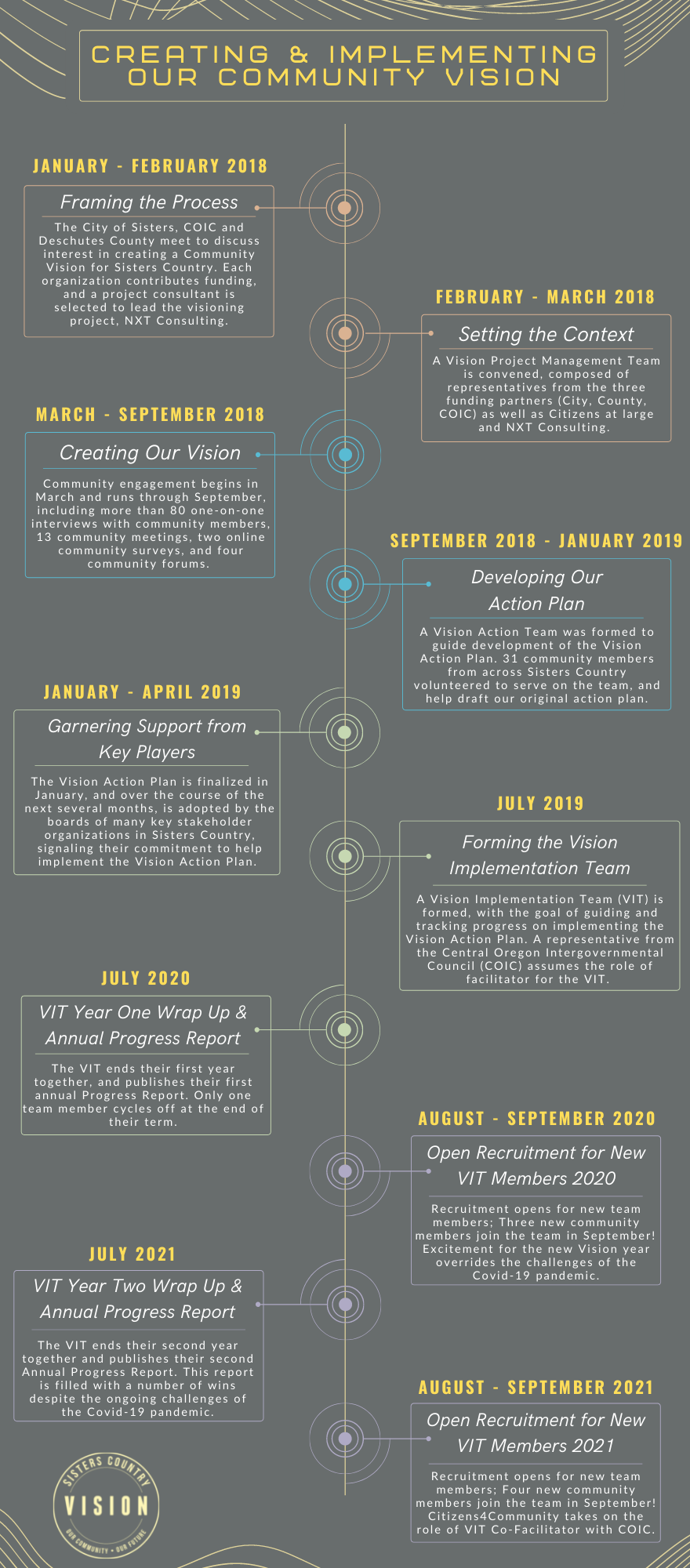
2021: In the Media
2020: In the Media
Vision Team Welcomes New Members
Working Behind the Scenes on Sisters Vision Project
The Sisters Vision will Inform Sisters 2040
Reactions to Sisters Woodlands Mixed
Sisters Vision Team Seeks New Members
Inspiring Community Members to Get Involved
Vision Partners Prepare for Fire Season
Creating Community One “Village” at a Time
Sisters Shows Resiliency in Pandemic
AFSC Brings Vision to Life
SPRD & Sisters Country Vision: What’s New, What’s Next?
Implementing Sisters Country Vision
The Vision Implementation Team (VIT) was formed in July 2019 to serve as a collaborative team of lead partners and community members who guide the implementation of the Vision Action Plan.
The team works together to track and communicate progress, dissolve barriers, locate and secure grant funding to catalyze projects, coordinate community education and events, and maintain strong positive relationships among partner organizations.
- Vision Action Plan: A framework for accomplishing the community goals surfaced during the visioning process, originally created by a team of 31 volunteer community leaders in late 2018.
- Focus Area: One of 4 broad categories used to organize the 20 Vision Strategies in the Vision Action Plan.
- Vision Strategy: One of 20 broad goals outlined in the Vision Action Plan.
- Vision Project: Individual projects or “action items” that support one or more Vision Strategies.
- Vision Partner: A community member or organization, not affiliated with the VIT, working independently to make progress on one or more Vision strategies.
- Completed Project: A Vision project that has been deemed complete by the lead partner(s) working on it.
- Active Project: A Vision project that one or more partners are currently working on, but has not yet been completed.
- Inactive Project: A Vision project that no one is working on currently, but appears in the Vision Action Plan as a future goal. Some inactive projects may be waiting for someone to step forward to lead them, while some may no longer be a community need or priority.
